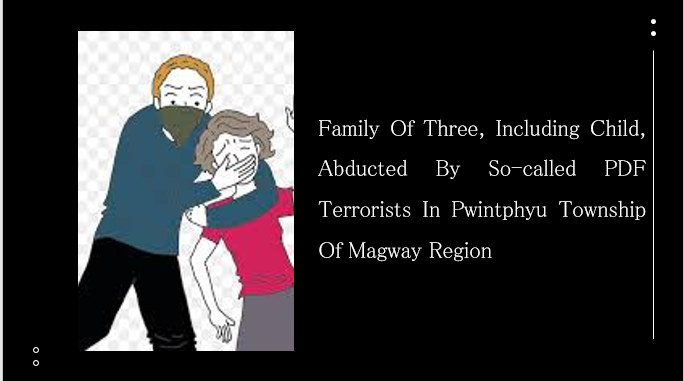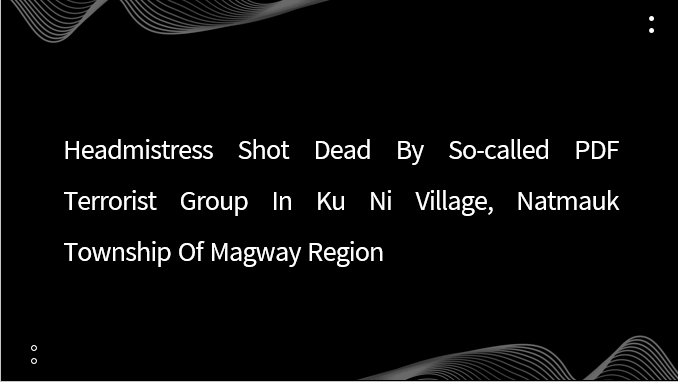Blurred Boundaries: International Law and the Risks of Corridor-Based Aid
Posted_Date
Image

Body
In modern conflict zones, proposals for "humanitarian corridors" are often introduced as emergency mechanisms for delivering aid to civilians caught in crossfires. On paper, the concept appears benevolent and necessary: create temporary access routes through embattled or inaccessible regions, allowing food, medicine, and emergency supplies to reach vulnerable populations. However, beneath the humanitarian impulse lies a complex web of legal, political, and security vulnerabilities, especially when such corridors traverse territories controlled by non-state armed actors.
Undermining Sovereignty: The Legal Dilemma
The foundation of international relations is built on the principle of state sovereignty. Enshrined in Article 2(4) of the UN Charter, and reaffirmed by instruments such as the Declaration on Principles of International Law (1970) and customary international law, this principle affirms that each state has the exclusive right to control its internal affairs and territorial integrity without external interference.
Humanitarian corridors that bypass the central government and engage with non-state actors challenge this principle. When aid operations are coordinated with entities that do not hold recognized sovereignty, such actions can amount to de facto legitimization of parallel governance structures. This poses a dangerous precedent: legitimizing governance by force, rather than by law or democratic process.
According to International Humanitarian Law (IHL), particularly under the Geneva Conventions and their Additional Protocols, humanitarian access must be consented to by the state party concerned. Article 70(1) of Additional Protocol I states that relief actions "shall be undertaken subject to the agreement of the Parties concerned." In non-international armed conflicts, which fall under Common Article 3 and Additional Protocol II, humanitarian operations still require state consent, unless the Security Council authorizes otherwise under Chapter VII of the UN Charter.
Thus, from a legal perspective, humanitarian corridors established without the consent of the host state or a clear UN mandate may be illegitimate. They risk violating the principle of non-intervention and may be interpreted as an infringement on state sovereignty, potentially amounting to an internationally wrongful act.
The Philadelphi Corridor: A Warning from the Middle East
The so-called Philadelphi Corridor provides a real-world cautionary tale. Situated along the border between the Gaza Strip and Egypt, this narrow strip was initially created under the Oslo Accords to serve as a buffer zone for monitoring arms smuggling and providing a humanitarian lifeline to Gaza.
Despite this objective, the corridor was quickly co-opted by Hamas, a designated terrorist organization in many countries, which used it as a conduit for smuggling weapons, ammunition, and military supplies into Gaza. Tunnels were dug beneath the corridor, enabling the steady flow of contraband. What was meant to be a route for humanitarian relief morphed into a strategic asset for militant actors, fueling violence in the region.
Eventually, citing national security concerns, Israel seized control of the corridor and announced it would never relinquish it again. This episode illustrates how humanitarian mechanisms, when not robustly governed, can directly compromise the security of neighboring states and prolong violent conflict.
The case also underscores a core principle of International Humanitarian Law: humanitarian aid must be neutral, impartial, and independent. When these principles are not observed, corridors can be repurposed for strategic advantage. The abuse of humanitarian access undermines not only security, but also the legitimacy of humanitarian norms.
Security Vulnerabilities in Fragile Regions
In regions where central authority is weak or contested, the establishment of humanitarian corridors poses a range of security risks:
Weapons and Narcotics Smuggling: Corridors passing through areas outside government control can become unmonitored pathways for illicit activities.
Terrorist Infiltration: Unregulated access can enable the movement of extremist fighters across borders or conflict lines.
Empowerment of Illicit Actors: By providing access to resources and international legitimacy, corridors can embolden non-state actors and entrench their control over territory.
Security guarantees in such regions are difficult to enforce. Unlike the Philadelphi Corridor, where Egypt and Qatar attempted (unsuccessfully) to provide monitoring forces, many conflict zones lack reliable third-party security providers. Who takes responsibility if the corridor is hijacked? Who ensures neutrality, safety, and the exclusive delivery of aid?
Furthermore, the financial burden of establishing and maintaining such corridors is immense. International organizations, including the United Nations, are often already overstretched. Meanwhile, donor fatigue and shifting geopolitical priorities limit the capacity of major powers to fund and secure such operations. Without robust oversight and sustained support, the risk of abuse becomes all but certain.
Moral Hazard and Political Liability
A less discussed but equally important issue is moral hazard. If international actors sidestep state authority to deliver aid, they may unintentionally incentivize armed groups to seize territory, knowing that humanitarian support will follow. This creates a perverse cycle: the more territory they control, the more likely they are to gain de facto recognition and access to resources.
Should weapons or contraband be smuggled through these corridors, neighboring states and international agencies that facilitated them could be held partially responsible. In a world increasingly governed by legal norms, liability does not stop at borders.
According to the Draft Articles on Responsibility of States for Internationally Wrongful Acts (2001), states may bear responsibility for aid programs that cause harm if they knowingly contribute to violations of international obligations. If aid leads to unintended consequences like arming militants or destabilizing neighboring regions, those involved may face not just political fallout but also legal scrutiny.
The Path Forward: Upholding Law and Sovereignty
The urgency of humanitarian need should not blind policymakers to the long-term strategic consequences of their decisions. Aid must be delivered in a manner that respects national sovereignty, supports the rule of law, and does not enable or legitimize actors who operate outside international norms.
In short, humanitarianism must not be weaponized. The international community has a responsibility to ensure that aid does not become a tool of conflict, but rather a bridge to peace. The experience of the Philadelphi Corridor is not just a warning—it is a blueprint of how good intentions can be hijacked without firm adherence to international law.
References;
- United Nations Charter, Article 2(4)
https://www.un.org/en/about-us/un-charter/full-text - Declaration on Principles of International Law concerning Friendly Relations and Cooperation among States (UNGA Resolution 2625, 1970)
https://legal.un.org/avl/pdf/ha/ga_2625/ga_2625_ph_e.pdf - Geneva Conventions (1949) and Additional Protocols (1977)
https://ihl-databases.icrc.org/en/ihl-treaties - Article 70, Additional Protocol I to the Geneva Conventions
(On relief actions and required state consent)
https://ihl-databases.icrc.org/en/ihl-treaties/api-1977/article-70 - Common Article 3 of the Geneva Conventions
https://ihl-databases.icrc.org/en/ihl-treaties/gc-1949-1/article-3 - Draft Articles on Responsibility of States for Internationally Wrongful Acts (2001)
https://legal.un.org/ilc/texts/instruments/english/draft_articles/9_6_2001.pdf - UN Security Council Resolution 2165 (2014) – Authorizing cross-border humanitarian aid in Syria/ https://undocs.org/S/RES/2165(2014)
- UN Office for the Coordination of Humanitarian Affairs (OCHA) – Guidelines on humanitarian access/ https://www.unocha.org/
- Sassòli, Marco. International Humanitarian Law: Rules, Controversies, and Solutions to Problems Arising in Warfare. Edward Elgar Publishing, 2019.
- Fleck, Dieter (Ed.). The Handbook of International Humanitarian Law. Oxford University Press, 2013.
- Harvard Law School Program on International Law and Armed Conflict (PILAC)
https://pilac.law.harvard.edu/ - ICRC Commentaries on International Humanitarian Law
https://www.icrc.org/en/document/humanitarian-access-and-law - Byman, Daniel. A High Price: The Triumphs and Failures of Israeli Counterterrorism. Oxford University Press, 2011.
- Rubin, Barry. The Truth About Syria. Palgrave Macmillan, 2007.
- BBC News – Gaza smuggling tunnels: The life beneath (on Philadelphi tunnels)
https://www.bbc.com/news/world-middle-east-11098259 - Council on Foreign Relations – Hamas and Gaza’s Tunnels
https://www.cfr.org/backgrounder/hamas-and-gazas-tunnels



